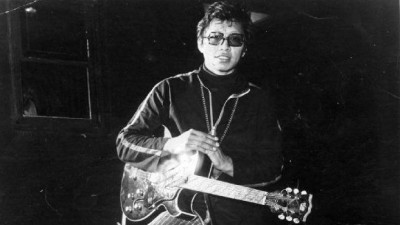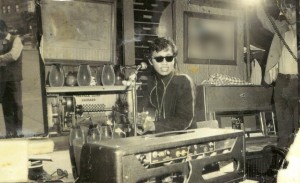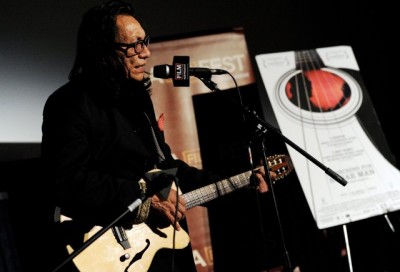
If you see no other documentary this year, you owe it to yourself to see Searching for Sugarman. This is not only the best documentary I’ve seen this year, it’s one that shows other documentaries how to do it — and it’s a documentary I can imagine myself seeing more than once (a rare thing, indeed). Some of what makes the film work so well is certainly due to its fascinating subject — Sixto Rodriguez — and his equally fascinating story, but there’s more to it than that. It would have been a simple matter to botch the telling of the story in any number of ways, but first-time filmmaker Malik Bendjelloul didn’t. It’s as if he knew he had something remarkable that needed an approach that took advantage of the story’s natural elements of mystery, suspense and anticipation — not to mention what seems like one of the most improbable twists of fate imaginable.

Do you even know who Sixto Rodriguez — or more correctly, just Rodriguez — is? I admit I certainly had never heard of him until I read about this movie. In simple terms, Rodriguez was a Detroit-based singer-songwriter in the early 1970s. He might be compared a little to Jim Croce or maybe even Bob Dylan, but he’s less saccharine than the former and more clear-voiced than the latter. In terms of content, he’s much nearer Dylan. He was good enough to be signed to a record deal, which produced two albums — Cold Fact and Coming from Reality. Despite being critically praised, neither album was a commercial success. You could spend days discussing why that was and never get anywhere. Pop music history is littered with similar cases. The fact is, though, that his records were flops and that was the end of Rodriguez’s musical career — except it wasn’t.

Somehow — and no one seems to agree on exactly how — his albums made it to Capetown, South Africa. Copies — mostly bootleg, of course — passed from person to person. Rodriguez’s anti-establishment songs made an immediate connection with the youth of South Africa — much of it becoming anthemic in the anti-apartheid movement. One person even comments that Rodrguez’s music formed the soundtrack of their lives — despite or perhaps because the songs were “discouraged” from receiving radio play. (The records in radio stations had been scratched so badly that the most “offensive” tracks were impossible to play.) All told, it’s estimated that more than 500,000 copies were sold.

But who was Rodriguez? The albums merely showed a picture of a young man with his face partly obscured by shadow and a pair sunglasses. There was no literature on him, and no one seemed to know anything about him. Wild stories sprung up — the most popular seeming to be that he’d committed suicide onstage (there was some disagreement on just how). The question was what really happened — and the film answers it. At this point, I’m torn between saying more and stopping right here. My instinct tells me that chances are that you already know the outcome, but maybe you don’t — and I don’t want to prevent the possibility of that. Plus, I certainly don’t want to ruin any of the brilliance of the method used in the structure of the film. Just go and see for yourself. If nothing else, you’ll hear some pretty good music you likely haven’t heard before, but I suspect you’ll get more than that out of the film. Rated PG-13 for brief strong language and some drug references




Ive loved Rodriguez since i first heard his albums 5 or 6 years ago. His second album is not quite as good as his first one but its worthy of checking out.
You have unsuspected depths.
This is moving from the Fine Arts to The Carolina on Friday.
And it is leaving town this Friday.